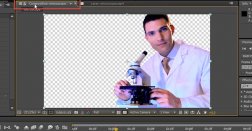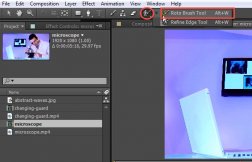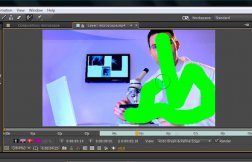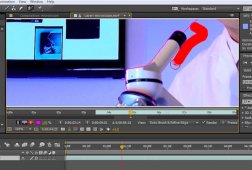 After Effects is a phenomenal tool for working with video footage in post production. And while many editors and effects specialists use the program to add CGI or effects, the program is just as useful for removing unwanted elements from recorded video.
After Effects is a phenomenal tool for working with video footage in post production. And while many editors and effects specialists use the program to add CGI or effects, the program is just as useful for removing unwanted elements from recorded video.
In this tutorial from our comprehensive 17-hour Adobe After Effects training video course, you’ll learn how to use the Roto brush tool to isolate foreground and background elements and manipulate them however you’d like.
 Getting Started with the Roto Brush tool
Getting Started with the Roto Brush tool
The Roto Brush tool will let you select the element in a video that you’d like to manipulate and remove. To activate the tool, hold the Alt or Option key and click W on your keyboard, or select an active Layer, and find it in the layers toolbar above the editing window, as shown below.
 The Roto brush has two modes, one for selecting foreground elements (the object you want), and one for selecting the background (everything around it). You can switch to the background editing mode by holding the Alt (Windows) or Option key (Mac). The tool’s crosshairs are green when in foreground mode, red when in background selection.
The Roto brush has two modes, one for selecting foreground elements (the object you want), and one for selecting the background (everything around it). You can switch to the background editing mode by holding the Alt (Windows) or Option key (Mac). The tool’s crosshairs are green when in foreground mode, red when in background selection.
Find a representative frame in your video sequence, and use the crosshairs to broadly ‘paint’ the item you want to isolate, as shown below.
 When you release your mouse button, the tool will try to automatically detect the edges of the object you selected. The detection is good, but not perfect. In places where it went too far, you can can bring the selection area back in using the background selection mode.
When you release your mouse button, the tool will try to automatically detect the edges of the object you selected. The detection is good, but not perfect. In places where it went too far, you can can bring the selection area back in using the background selection mode.
The goal is to get as close as you can, changing the size of the brush to highlight smaller areas that first weren’t picked up, such as the subject’s ears in our example, and removing selection areas that have gone too far with the alternate selection mode.
The Roto brush is able to follow the movement of a selected object within a scene, but, once again, you’ll want to verify how well the automatic detection works. Use the








